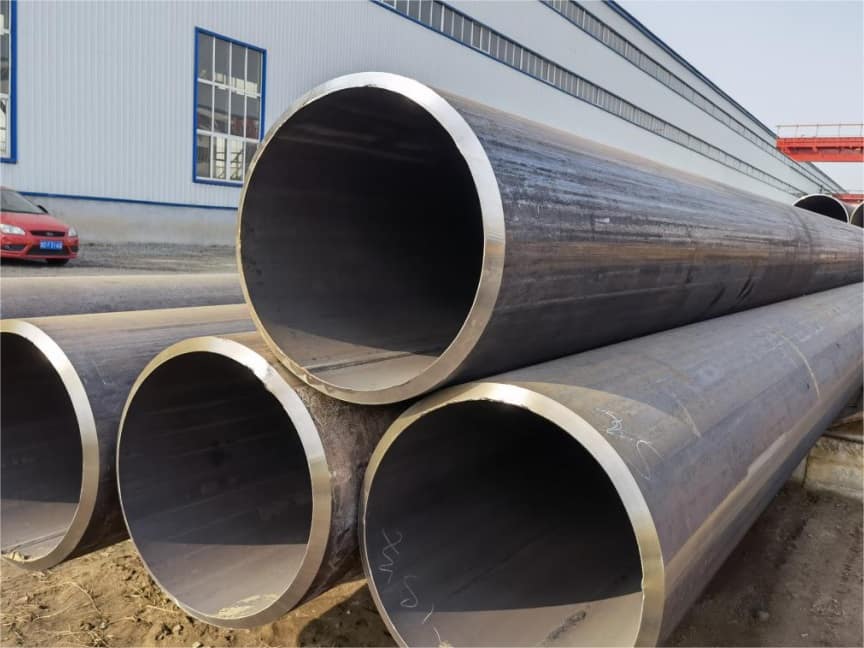Carbon steel pipes are widely used in various industries due to their strength, durability, and affordability. Carbon Steel Pipe Welding Fabrication is a critical process that ensures the integrity and functionality of the piping systems. In this in-depth post, we will explore the world of carbon steel pipe welding, covering its techniques, challenges, and the latest advancements.
Introduction to Carbon Steel Pipe Welding Fabrication

Carbon steel pipe welding is the process of joining sections of carbon steel pipes together to form a continuous pipeline. This process is essential in constructing pipelines for transporting fluids, gases, and other substances in industries such as oil and gas, chemical processing, power generation, and construction.
Welding Techniques for Carbon Steel Pipes Fabrication
- Shielded Metal Arc Welding (SMAW): One of the most commonly used methods, involving the use of a consumable electrode and a shielding gas to protect the weld pool.
- Gas Metal Arc Welding (GMAW): Also known as MIG welding, which uses a continuous wire electrode and a shielding gas.
- Gas Tungsten Arc Welding (GTAW): Commonly referred to as TIG welding, it offers precise control and high-quality welds.
Factors Affecting Carbon Steel Pipe Welding Fabrication
- Pipe Material Properties: The chemical composition and mechanical properties of carbon steel can influence the welding process.
- Pipe Dimensions and Thickness: The size and thickness of the pipes can pose challenges in achieving proper weld penetration and fusion.
- Welding Environment: Factors such as temperature, humidity, and cleanliness of the welding area can impact the quality of the weld.
Challenges in Carbon Steel Pipe Welding Fabrication
- Carbon Migration and Hardening: During welding, carbon can migrate from the base metal to the heat-affected zone, potentially causing hardening and reduced ductility.
- Weld Imperfections: Issues such as porosity, cracks, and incomplete fusion can occur, affecting the strength and integrity of the weld.
- Post-Weld Distortion: The heat input during welding can cause the pipe to distort, requiring additional measures to correct.
Quality Control and Inspection
- Non-Destructive Testing (NDT): Techniques such as radiography, ultrasonic testing, and magnetic particle testing are used to detect any defects in the weld.
- Visual Inspection: Inspectors carefully examine the weld for surface irregularities and visible defects.
- Mechanical Testing: Tests may include tensile testing, impact testing, and hardness testing to evaluate the weld’s properties.
Advancements
- Automation and Robotics: The use of automated welding systems and robots improves consistency, productivity, and reduces human error.
- Advanced Welding Consumables: Newer electrode and wire formulations offer better performance and improved weld quality.
- Digital Monitoring and Control: Real-time monitoring of welding parameters allows for more precise control and adjustment during the welding process.
Safety Considerations in Carbon Steel Pipe Welding Fabrication
- Arc Flash and Electrical Hazards: Appropriate personal protective equipment and safety protocols are essential to protect welders from electrical hazards.
- Fumes and Gases: Welding can generate harmful fumes and gases, requiring proper ventilation and respiratory protection.
- Fire Prevention: Precautions must be taken to prevent fires due to the heat generated during welding.
Case Studies of Carbon Steel Pipe Welding Projects
- Large-Scale Oil and Gas Pipeline Installation: Highlighting the challenges and solutions in welding carbon steel pipes for long-distance pipelines.
- Industrial Plant Piping System Upgrade: Demonstrating the application of advanced welding techniques in an industrial setting.
Conclusion
Carbon steel pipe welding Fabrication is a complex yet critical process that requires a thorough understanding of the techniques, challenges, and advancements. By ensuring proper welding procedures, quality control, and safety measures, the integrity and reliability of carbon steel pipe systems can be maintained. As technology continues to evolve, the welding industry will continue to adapt and improve, providing even better solutions for carbon steel pipe welding in the future.
In conclusion, carbon steel pipe welding is a crucial aspect of many industrial applications, and ongoing research and development are essential to meet the ever-increasing demands for high-quality and efficient welding. With the right knowledge and techniques, carbon steel pipe welding can provide long-lasting and dependable piping systems that support the infrastructure of our modern world.
Learn more Successful Arctic module fabrication, steel structure, modular and skid, steelwork, supplier audit, DNV Class, Oil & Gas, welding supervisor, welding quality inspection, CWI CSWIP welding inspector, pump and pipe, stainless steel fabrication and CNAS ISO 17025 9712 NDT NDE practice via below-
https://www.jsc-safe.com/steel-structures-modules-machining/
